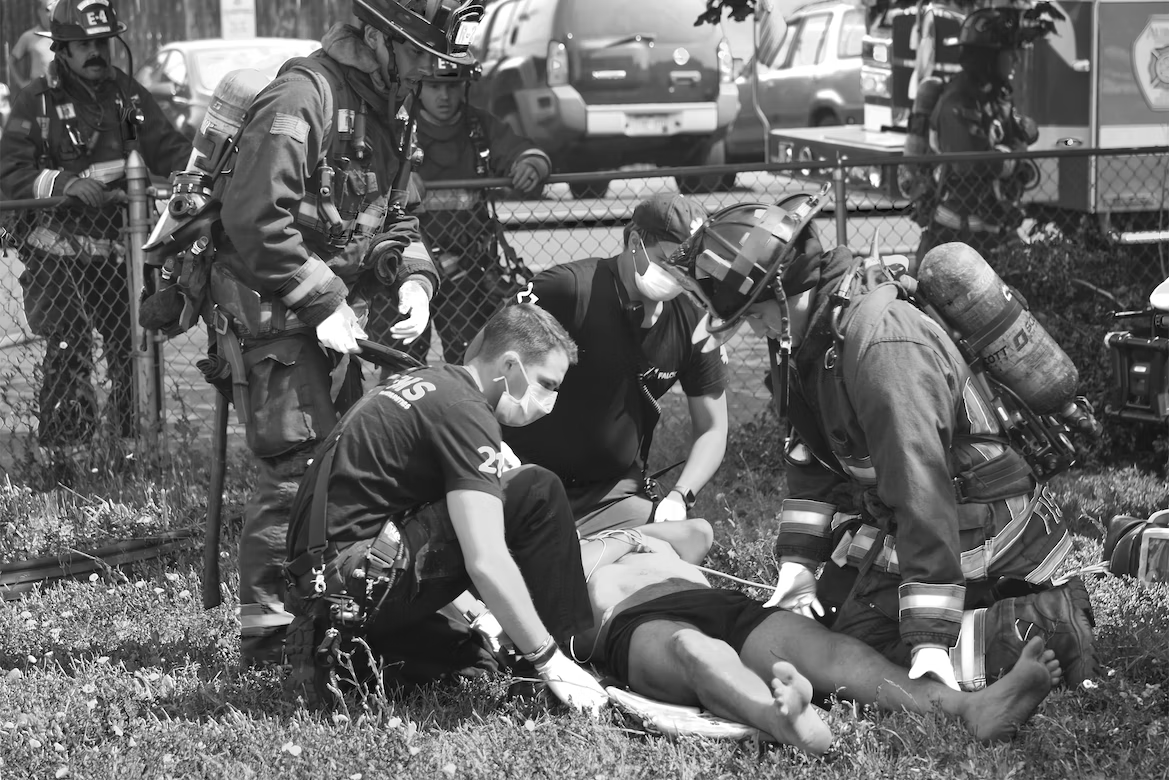The well-being of workers is paramount, and no one wants to see a colleague wounded while on the job. However, anyone can sustain an injury anytime and out of nowhere. Having a strategy ready before an emergency happens is crucial. Your organization's safety procedure should be intuitively straightforward. This way, your group will be prepared to respond quickly to an emergency and aid needy individuals. It is also crucial that your business follows all applicable federal safety regulations.

Take Care Of The Injured Worker
When an accident occurs, the first is to attend to the injured. Depending on the severity of the occurrence, you'll need to decide what medical attention is necessary to ensure the employee's well-being. Depending on the severity of the injury, you may not need to call for an ambulance or give transportation to a competent medical expert in the case of a minor injury like a cut or sprain. You can take the worker to the doctor recommended by the company's comp insurer or take them to the nearest urgent care center.Inform The Appropriate People In Management And The Team.
After first aid to the employee, you should notify upper management and relay any relevant information. Record details such as where it happened, who was hurt, how they were treated, and what happened afterward. Please tell your management team so they can alert the appropriate personnel and take preventative measures to ensure the safety of everyone involved. Further care could be recommended depending on the injury severity.Secure The Scene
As soon as an injured worker arrives at the hospital, the scene should be locked down and secured. By denying access to the area, you can ensure your other workers' security and stop the incident's recurrence. It is essential to secure an accident scene for safety and documentation reasons. The scene can be preserved, and event reporting can be made more precise and complete if access to the area is restricted. Fewer individuals present means more of a possibility that the scene will be undisturbed, providing a clearer picture of what led to the occurrence.File A Report
One of the most important things to do after an injury on the job, beyond making sure everyone involved is safe, is to fill out an incident report. Injuries and illnesses that occur on the job must be documented formally. Don't wait more than 24 hours after the incident to fill up and submit the report. When you collect witness testimony immediately following an accident, they will still have the details fresh in their memories and be more likely to give you an accurate account of what happened. When incidents are reported quickly, everyone involved benefits. If you want insurance companies to promptly handle claims such as hearing loss compensation and get your employees the care they need, you must complete the incident report immediately. When an incident is reported late, it usually costs more than when it is reported quickly with all the necessary paperwork. Increased premiums or fines for late reporting can cost businesses thousands of dollars when claims are delayed.By documenting the incident thoroughly and submitting the report without delay, you minimize potential complications with insurance claims and legal proceedings. For more complex cases, involving this personal injury law firm can provide valuable guidance in handling claims, ensuring that every detail is properly documented. Working with legal experts can also help safeguard the rights of your employees and protect your business from costly liabilities.
Set Up A Safety Protocol
After a workplace mishap, you'll want to take every precaution to avoid a repeat. By providing safety rules and education to team members, employers are in a position to positively affect their entire activities and foster a culture of safety in the workplace. By emphasizing safety, providing employees with training and information, and recognizing and rewarding those who take precautions, leadership teams may demonstrate to their teams that safety is a top priority. You can get insight from the situation by considering how the harm could have been avoided and how the reaction could have been improved. The first step in improving workplace safety is identifying where it's lacking so that you can fill those holes and stop them from opening up again in the future.Launch A Program To Get Employees Back To Work.
Unfortunately, many accidents happen at work and force employees to miss shifts. When an employee has been out of commission for an extended period, the prospect of returning to work can seem overwhelming. Create a strategy for your employee's return to work to ensure their success and the success of the organization as a whole. Setting up a temporary or modified position for an employee who has sustained a long-term ailment will help them get back to work as soon as possible. Transitional responsibilities might be brief and must differ from before the injury. Employees can get back on their feet as employees with the help of this program, all while keeping their jobs and being connected to the organization.

After an injury, a good employer should do more than handle the practical details. In addition, they need to check in with workers later to ensure they're doing okay mentally and physically. Open and empathetic communication is critical if you care about your employees and want to engage with them to establish a realistic return plan. This kind of consideration shows the rest of your team that they are valued and can boost your retention rate and employee happiness.
After an injury, a good employer should do more than handle the practical details. In addition, they need to check in with workers later to ensure they're doing okay mentally and physically. Open and empathetic communication is critical if you care about your employees and want to engage with them to establish a realistic return plan. This kind of consideration shows the rest of your team that they are valued and can boost your retention rate and employee happiness.








.jpg)
.jpg)



